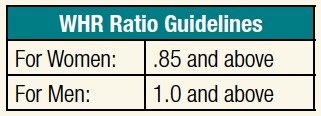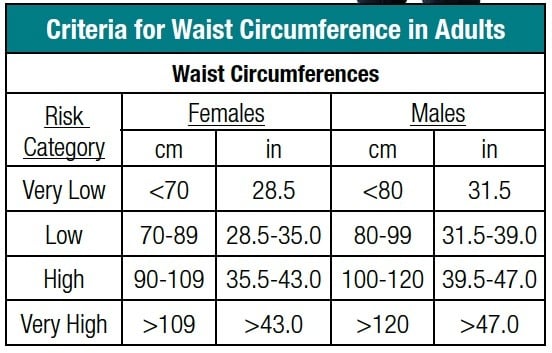
- December 1, 2022
- CFI Communications
Waist-to-Hip Ratio: What You Should Know
What is waist-to-hip ratio?
Waist to hip ratio, or WHR, is the ratio of the circumference of the waist to that of the hips. It is calculated by measuring the smallest circumference of the natural waist, usually just above the belly button, and dividing by the largest circumference of the buttocks or hips. The ratio is applied both to women and men. The WHR has been used as an indicator or measure of the health of a person, and the risk of developing serious health conditions. In particular, it is used to assess the risk of heart disease and hypertension. Health risk standards vary with age and gender. Research shows that people with “apple-shaped” bodies (with more weight around the waist) face more health risks than those with “pear-shaped” bodies, who carry more weight around the hips. Those that are considered “apples” are at a much higher risk for heart disease and hypertension than “pears.” Research shows that abdominal fat particularly raises health risks for women. If you want to get the most accurate measure of potential risk from belly fat, measure your hips and calculate your waist to hip ratio.
What does your WHR mean?
WHR is used as a measurement of obesity, which in turn is a possible indicator of other more serious health conditions. To get your waist to hip ratio, measure your waist circumference in inches and divide it by your hip circumference in inches.
An abnormal ratio is said to be:
How to measure your WHR:
To get your waist-to-hip ratio, measure the waist at its narrowest point, then measure the hips at their widest point.
Hips - Standing, measure at the largest girth, where the buttocks or hips are protruding the greatest.
Waist - Standing, measure at the narrowest point or at the midway point between the top of the hip bone and the bottom of the rib cage.
If you are a male and your waist measurement is 32 inches and your hip measurement is equal to 38 inches, your waist-to-hip ratio is 0.84, which is defined as low risk.

As the ratio increases, so does the risk. It takes exercise and a healthy diet to lose belly fat.
Wellness Coaches USA ©2009-2010
All Rights Reserved.

Leave Your Comment